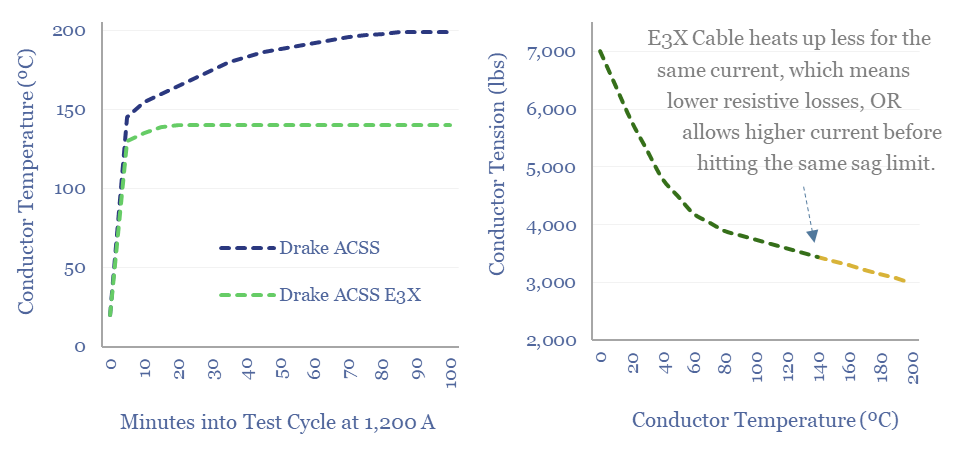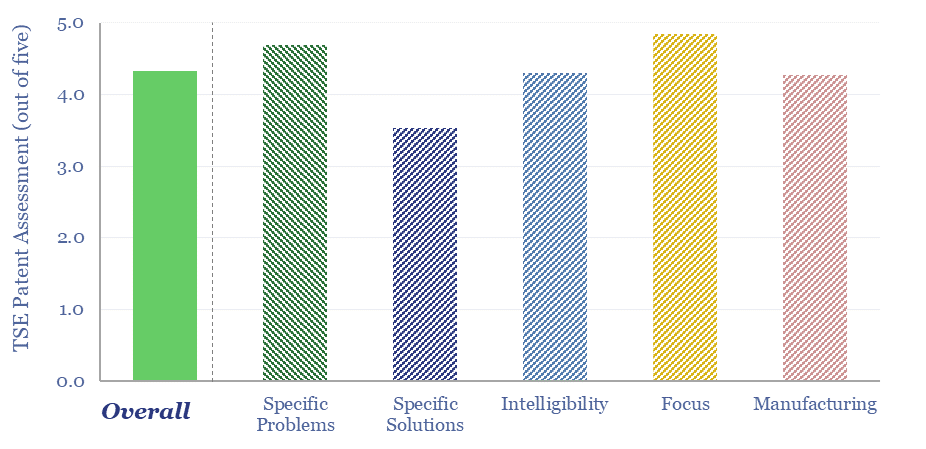Prysmian E3X technology is a ceramic coating that can be added onto new and pre-existing power transmission cables, improving their thermal emissivity, so they heat up 30% less, have 25% lower resistive losses, and/or can carry 25% increased currents. This data-file locates the patents underpinning E3X technology, identifies the materials used, and finds a strong moat around the technology.
In 2018, Prysmian acquired General Cable in a $3bn deal, apparently outbidding China’s Hengtong, plus Nexans and NKT, who were also interested. Prysmian thus gained access to General Cable’s E3X technology, which has exciting potential for reconductoring transmission lines.
E3X is a thin yet durable ceramic coating, with 0.9x emissivity factor and 0.2x solar absorptivity factor, that can be applied to the outside of power transmission cables, thereby helping the conductors to dissipate heat. This matters as hot cables are more resistive and also tend to sag causing electrical hazards.
For comparison, note that bare aluminium cables have a notoriously poor heat emissivity factor, around 0.16x, which is one of the key reasons they heat up and hit sag limits.
Hence compared to other cables operating under the same conditions, E3X cables have 30% lower temperatures, which can improve conductivity and lower operating losses by 25%; or it can allow for 25% increased ampacity within the same sag/loss limits. Data in our chart below come from testing of E3X at Oak Ridge National Laboratory.

At least 20 North American utilities have now trialed or deployed Prysmian E3X technology to improve the carrying capacity of their network. It is also included as standard for one of the leading manufacturers of advanced conductors. Hence this technology looks interesting.
How does Prysmian E3X technology work and is it locked up with patents? Our answers to this question are based on locating the underlying patents and reviewing them. Our findings are in this data-file.
The patents behind E3X score very well on our patent assessment framework, for reasons in the data-file. And we can also guess at the composition of E3X ceramic coatings, which interestingly, will pull on demand for silicon carbide?
Full details are available in this data-file, while for clients with TSE’s written subscription, we have added some conclusions into our research note into advanced conductors.
